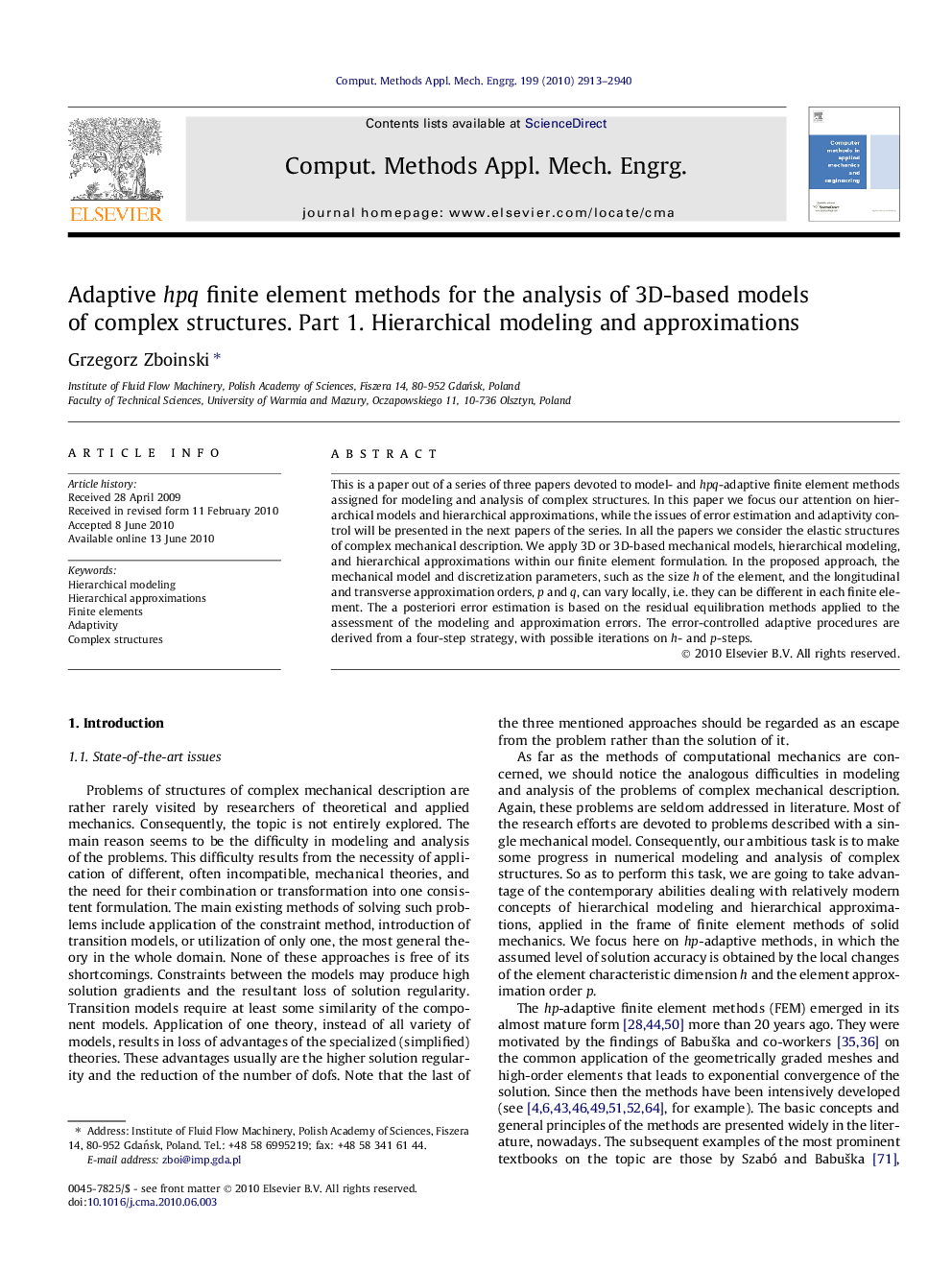| Article ID | Journal | Published Year | Pages | File Type |
|---|---|---|---|---|
| 498959 | Computer Methods in Applied Mechanics and Engineering | 2010 | 28 Pages |
This is a paper out of a series of three papers devoted to model- and hpq-adaptive finite element methods assigned for modeling and analysis of complex structures. In this paper we focus our attention on hierarchical models and hierarchical approximations, while the issues of error estimation and adaptivity control will be presented in the next papers of the series. In all the papers we consider the elastic structures of complex mechanical description. We apply 3D or 3D-based mechanical models, hierarchical modeling, and hierarchical approximations within our finite element formulation. In the proposed approach, the mechanical model and discretization parameters, such as the size h of the element, and the longitudinal and transverse approximation orders, p and q, can vary locally, i.e. they can be different in each finite element. The a posteriori error estimation is based on the residual equilibration methods applied to the assessment of the modeling and approximation errors. The error-controlled adaptive procedures are derived from a four-step strategy, with possible iterations on h- and p-steps.
